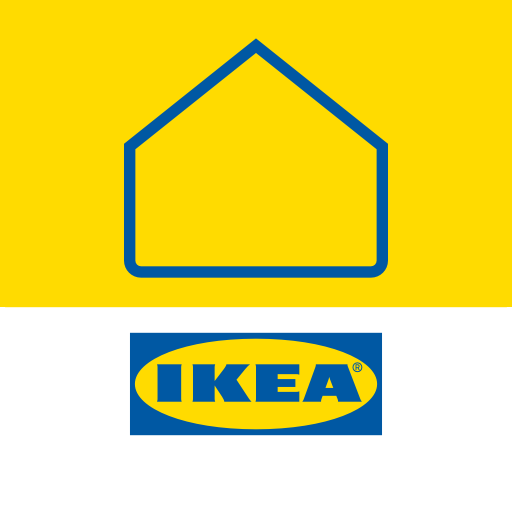It took about 4 days to get everyone house-trained to use Alexa’s voice commands instead of wall light switches. I used an inexpensive label maker to add simple Alexa voice prompts to each switch to remind me and the guests not to turn the power supply off to smart lightbulbs from Yeelight (review). There was a better solution at hand: smart light switches. Should you use them instead of smart bulbs too?
Are Smart Light Switches worth the hassle?

When I started home automation, smart lightbulbs were expensive, and smart switches were only just hitting the market. Apart from the price, most of the switches require live and neutral wire present in your wall cavity. It’s not something you often see in the UK.
As smart LED lightbulbs started to dominate the market, their prices went down, and outfitting several light sources with individual smart bulbs became affordable. The new smart control came at the price of a couple of dollars and the inability to use your wall switches ever again.
Smart switches popped back in on my radar when I read about new versions that no longer require live and neutral lines. This, and the great reduction in price made me investigate the available options. Here are some smart switches I got to test them out:
- 1-3 Gang Zigbee Click N SmartThings
- 1-3 Gang Zigbee Click LN Alexa/Google
- 1-3 Gang WiFi Touch N Alexa/Google
- 1-3 Gang Zigbee Touch no wires Alexa/Google
- 1-3 Gang Zigbee Touch N Alexa/Google
While everyone at home is trained in using voice controls, the British desire of getting control back (a very Brexit thing, if you know, you know) is a force not to be reckoned with. I wanted to have my cake and switch the lights with a flip of the finger – just in case.
Different countries, different standards


To better understand smart wall switches, we have to take a closer look at wiring standards in different countries. Based on your location, one of the 2 standards will apply to your lights. This is subject to individual circumstances, of course. In some scenarios, you can end up with both standards being present in your house, especially if you had major electrical work done since the house was built.
The first task is to understand what smart switches would meet your needs. The wall switch cavity will hold all the answers. Turn off the power before you dig inside it.
Not all switches are created equally
Direct controls vs 2-3 way control
Direct control implies that your switch is directly connected to the light fitting and there are no other switches connected which can control that light source.

If you can control a single light source with more than one switch at the same time, your wiring is more complicated and you have to look into how the 2 way (or more) control has been implemented. These situations may require specialistic smart switches to work, but in some cases (if you are lucky) a simple smart switch will still work.
Multi-way control is resolved by different switches present in your control circuit. It’s worth taking all switches out to see how it’s all wired. These situations will give you the biggest headache when it comes to home

As you can see in the sample image above, it’s possible to use the existing infrastructure to wire in a smart switch or relay without buying a connected switch for each toggle point.
Multi gang switches

If your switch can operate more than one lightbulb or light zone, you’ll need a smart switch that can do that too. Most brands will provide you with up to 3 gang smart switches so you can control up to 3 light sources individually. These come with separate relays at the back to connect directly to your existing circuit.
For best results, I suggest getting a smart switch that conforms to the N+1 principle where the number of physical toggles is bigger than the number of gangs controlled directly. Why? Check out this post about utilising the extra control surface from your smart switch.
Every smart switch will provide you with technical reference and switching capabilities. Unless you are trying to control a very power-hungry device, smart wall switches are usually rated well within your light bulb power requirement. Refer to manual for power and current limits.
Dimmers

Dimming is fun, and there are options out there to enable smart dimming controls of the existing lights. Unfortunately, these can be tricky to match well as smart switches not only have to support the dimming option but have to be used with a compatible (and often more expenisve) light bulb. Dimming switches can come in multi-gang flavours and as such the rules from above apply too.
Lightbulbs can be dimmed by lowering the voltage, and current or using a PWM signal, and both your switch and the bulb must support the same dimming technology otherwise dimming can result in flickering or being unable to turn the light off completely.
Using dimming switches with smart lightbulbs is never a good idea unless the lightbulb is designed for it. If you want to use the dim a smart bulb, consider these 4 solutions:
In-wall switches

Reasonably new on the market are devices that use existing light solutions to make your house smart. I’m talking about devices like Shelly 1 (review), Sonoff Mini (review), or Sonoff D1 (review).
These aim to smart up your home without the need for additional infrastructure. Hidden behind a light wall switch or ceiling fitting, these switches control the light via the Internet without taking your ability to flip the switch.
While the installation can be difficult, the prices of in-wall switches came down to a reasonable level and these are now small enough to fit inside your walls. Check out this article comparing Shelly 1 vs Sonoff Mini to see which one suits you best.
You will be able to use the wall switch as usual, and there is no need to replace the lightbulb either unless your switch supports dimming.
Live wire vs Neutral
Unless your house is wired in a spectacular fashion (that’s not good news for you), you are likely to see one of two scenarios when it comes to light fittings. Regardless of the switching method, lights are often linked together in a loop and connected to a separate breaker.
L & N wire

If you are lucky enough, your wall light toggle hides access to 4 (or more) wires. Lucky, as the range of the smart wall toggles will be easier. Inside the electrical box, you will find live & neutral wires, possibly earth wire and a loop that continues to a light switch.
In a scenario like this, simply connect the L & N wires to your new wall socket (earth optional), connect the lightbulb loop to N and Lout and you are pretty much ready to enjoy new IoT light.
In this scenario, you would be able to connect a smart switch like Sonoff Mini or Shelly, a behind-the-wall switch as well.
Live wire only


If you are less lucky, your light fitting supplies the L & N and the wall switch will simply close the circuit. To accommodate this scenario, there are Live wire-only wall switches.
To power up your smart switch, you have to identify the Live wire. Failing to do so will result in the switch not working correctly. Identify the Live wire inside your wall socket and connect it with the correct terminal. Feed the other wire(s) to terminals responsible for each gang relay. Bear in mind, that for the switch to work you must connect at least one gang via L1.

Some of the switches will require an additional capacitor to be added between the Live wire coming out of the switch and the neutral wire. The capacitor allows more current to flow through, to power up the smart switch.
Cons and pros
Each technology comes with advantages and things to consider. Smart switches are no different and offer certain benefits over smart lightbulbs. Carefully examine your circumstances to know which one is the best fit for you and if you are ok with the consequences of your choices.
Lightbulbs
| PRO | CON |
| Inexpensive | render wall switch useless |
| Easy to fit & replace | one per light socket required |
| Zigbee ones act as a mesh router | |
| Great choice of bulbs | |
| Support dimming, colour change | |
| can be used with lamps |
As you can see, smart lightbulbs come a long way to provide our smart home with the best features of IoT control at the cost of not being able to use wall switching. For some, it’s a small price to pay, others will find this inconvenience annoying.
Smart Wall Switches
| PRO | CON |
| Becomes more affordable | need professional installation |
| keeps wall switch operational | harder to replace |
| Zigbee ones act as a mesh router | dimming may require special bulbs |
| You can use existing bulbs | can’t be used with lamps |
| Support dimming, colour change | an occasional flicker of the light at toggle |
| one per wall switch |
Smart switches can be a viable option, especially if you want to control outlets with multiple gangs and lightbulbs. A single smart switch could control 3 channels with 2-3 bulbs in each channel. If you were to retrofit this with smart bulbs that cost would quickly add up.
Smart Switches
| PRO | CON |
| affordable | need professional installation |
| keeps wall switch operational | harder to replace |
| You can use existing bulbs | no dimming |
| one per wall switch* | may not fit inside the socket |
* 2-way switches still need just one, depending on the wiring
Smart switches like Sonoff Mini (review) or Shelly 1 (review) are a direct alternative to smart wall switches. Invisible to the naked eye, can be added where space isn’t a concern.

Buy Shelly 1
Buy it using these links to support NotEnoughTech.
Zigbee, Wifi or else
When it comes to lights, power delivery is something I don’t have to consider when picking the interface. The device is connected 24/7 and I don’t have to worry about battery-related issues. Should you go with truly connected lights via WiFi or aim for alternative protocols like Zigbee or Bluetooth?
WiFi
WiFi-connected devices benefit from decreased latency in operation, but are limited by your router range, but may introduce additional security concerns. Being linked to WiFi at home means that the network is as strong as the weakest link. That compromising factor could be a cheap WiFi lightbulb or wall switch you picked on a sale.
Zigbee, Z-wave and other
On the other hand, protocols like Zigbee don’t use WiFi directly but require a Zigbee hub (or cc2531 stick) (additional cost) to be operational. While latency is bigger than with WiFi, the devices are very much usable and often powered by mains Zigbee devices act as mesh routers removing blind connection spots.
These devices are harder to hack as they are not exposed to the Internet directly and don’t interact with your LAN in any other way than a connected hub.
- 1-3 Gang Zigbee Click N SmartThings
- 1-3 Gang Zigbee Click LN Alexa/Google
- 1-3 Gang WiFi Touch N Alexa/Google
- 1-3 Gang Zigbee Touch no wires Alexa/Google
- 1-3 Gang Zigbee Touch N Alexa/Google
The often skipped benefit of Zigbee is that you can use battery-operated switches and sensors that last months on a single battery. Having a well-developed mesh at home keeps all sensors, buttons and remotes always in range.

Buy Benexmart Tuya Zigbee kit
Buy it using these links to support NotEnoughTech.
To hack, or not to hack
Chances are, that your smart light switch can be flashed with custom software. WiFi gadgets are easier to hack since these are longer on the market than Zigbee. Your switch could be already on the list of devices compatible with Tasmota (a guide to Tasmotizer). You will be sacrificing off-the-shelf functionality (apps from IKEA, Philips, Xiaomi, Tuya or eWeLink) but what you get in exchange is the cross-system compatibility that can’t be achieved otherwise.
The internet (and this website) is full of examples of how to make your Xiaomi Zigbee button act as a dimmer and work with WiFi Yeelights or how to get IKEA Tradfri to work with anything you want.
These benefits, however, come with trade-offs, as you will be responsible for connecting and troubleshooting everything yourself, there are no straight-forward Alexa (Alexa in NodeRED) and Google Assistant integrations (gBridge alternatives), but it’s a very satisfying rabbit hole that you will enjoy exploring.
Verdict
And the winner of the contest is… all devices. Let’s be honest. It’s all about having options tailored to your specific needs. Buying 6 connected light bulbs just to automate a single over-the-top light fitting is an insane idea when you can simply automate it with a light switch instead.

Voice-controlled lights are fun and convenient until you are trying to get Alexa/Google Assistant to recognise your command for the 3rd time when everyone else is asleep in your household.
The same logic applies to other situations. Always consider what is the best fit for your use, and never be afraid of mixing different methods to achieve the automation of your dreams. A perfect smart home would use a combination of both, providing you with smart switches for the main lights across the home and complimentary colour bulbs in lamps and shades to create that special mood once in a while.
- 1-3 Gang Zigbee Click N SmartThings
- 1-3 Gang Zigbee Click LN Alexa/Google
- 1-3 Gang WiFi Touch N Alexa/Google
- 1-3 Gang Zigbee Touch no wires Alexa/Google
- 1-3 Gang Zigbee Touch N Alexa/Google
Conclusion
As you probably expected, the biggest benefit of making your home smart is making it feel personal. It’s best executed when you are in total control over what happens at your house and what technologies are used to achieve this effect. Automating lights is probably the most visible smart home improvement that you can add to a budget. With careful planning ahead it’s cheaper than you think. Let me know if you use smart switches in this Reddit thread.
🆓📈 – See the transparency note for details.



























